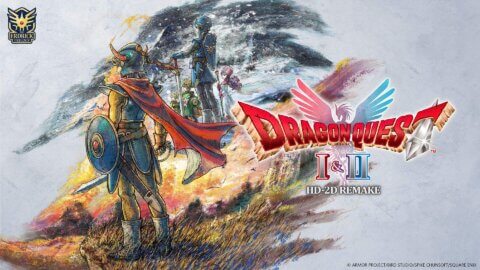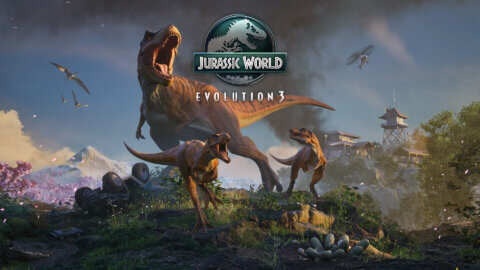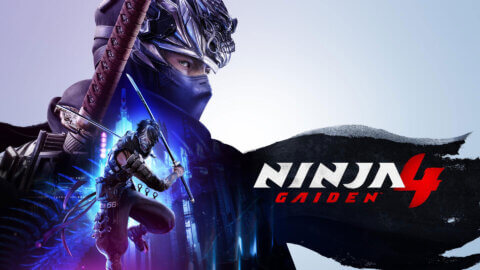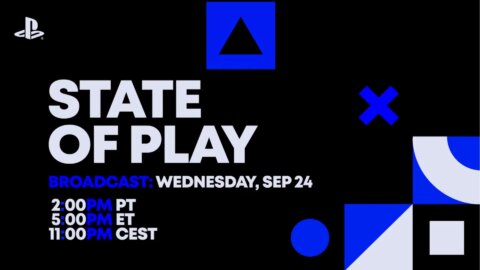When Obsidian Entertainment announced The Outer Worlds 2, I didn’t need much convincing. This is one of the busiest and most reliable studios around, they’ve already shipped Avowed and Grounded 2 this year alone, and if any team knows how to make a witty, choice-driven RPG set among the stars, it’s them. I had a great time with the first game and its DLC, so diving into the sequel felt like a no-brainer. I’ve been craving that space-RPG itch ever since Starfield, and The Outer Worlds 2 scratched it in all the right ways.

The game begins where all good RPGs do, the character creator. Obsidian doesn’t go overboard here, but it gives you enough tools to shape a character that feels yours. You can tweak your facial features, hairstyles, and prosthetic arm options (if you want one), but don’t expect the kind of deep customisation Cyberpunk 2077 offers. It’s serviceable, you’ll get something distinctive enough, even if the slider variety feels a bit thin on some options.
After appearance, you set your background, traits, and skills. Your background gives flavour to your dialogue and world interactions, whether you were once a corporate grunt, a mechanic, or a smooth-talking leader etc. Traits grant bonuses, but there’s a catch, if you want more traits than the default set, you’ll have to accept a flaw. I liked that risk-reward balance. It adds texture to role-play. Maybe your character’s sharper in combat but has less health overall or is more susceptible to toxic poison, or incredibly charming but physically fragile. It’s a neat way to tie personality into gameplay.
Skills and flaws are central to how you play. Skills affect what you can say and do, persuasion, hacking, engineering, combat proficiency, all that good stuff, while flaws actively shape your journey and provide for some hilarious situations. It’s these small touches that remind you you’re not just min-maxing stats, you’re defining a person who has strengths, weaknesses, and history.
The first thing that hit me once I dropped into the world was how The Outer Worlds 2 looks. The art direction is still that unmistakable Obsidian blend of retro-futurism and corporate dystopia, bold colours, neon signs, and strange alien biomes stitched together with personality and grit. It’s weird, vibrant, and immediately charming. The environments feel handcrafted, each one bursting with details that reward exploration. There’s a playful absurdity in the world’s design, a sense that every planet is a satire of something human, just pushed to other worldly extremes. Even the smallest settlements feel alive, from rundown mining colonies run by half-mad CEOs to pristine corporate towns masking their rot with cheery slogans. It’s gorgeous, quirky, and distinct, unmistakably Outer Worlds.
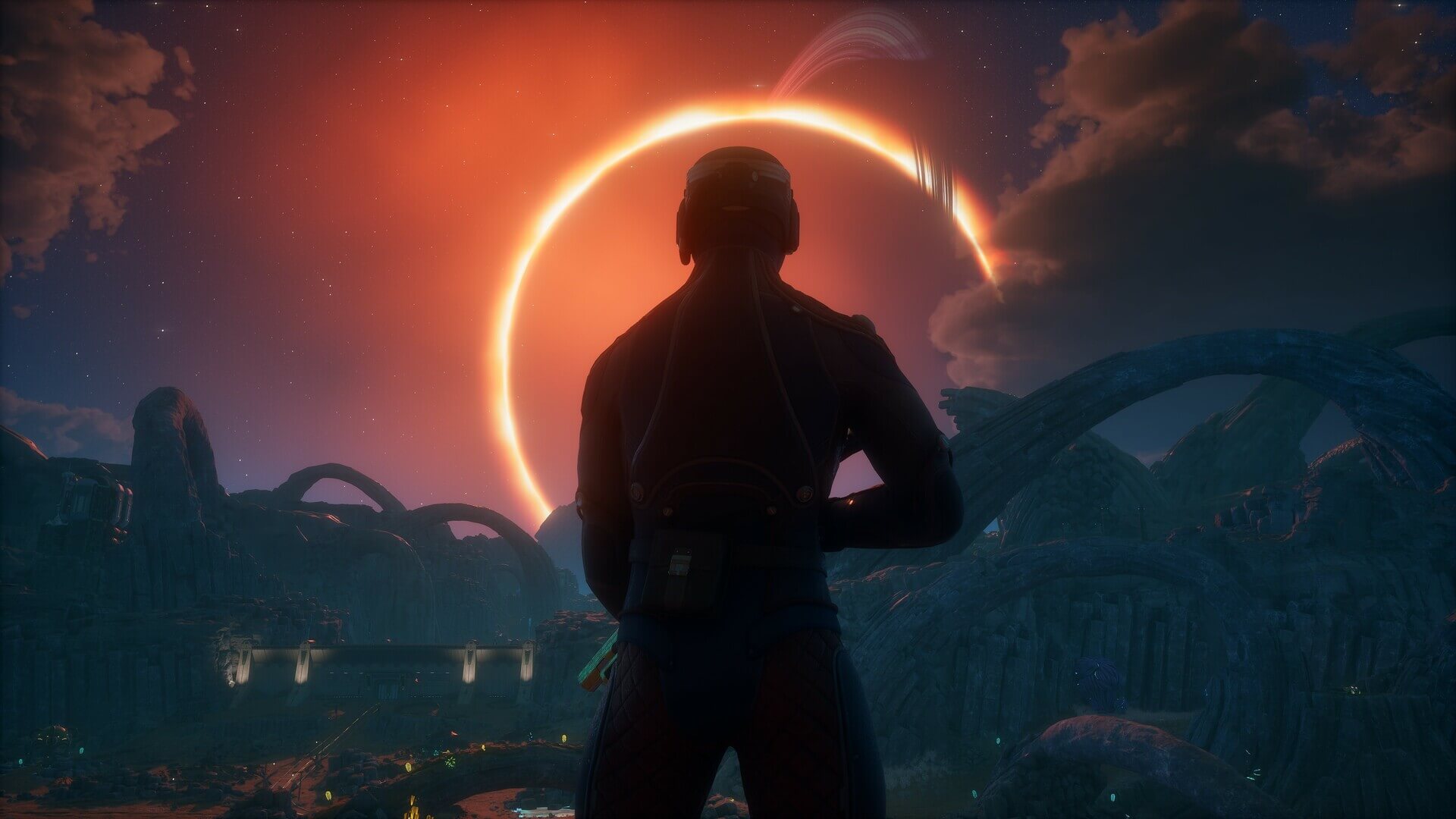
The story kicks off with a classic sci-fi disaster, a mission gone wrong. What follows is a ten-year timeskip that drops you into a changed world and a quest for answers, and revenge. It’s a great hook, personal and punchy, but what surprised me was how quickly that revenge plot widens into something much larger.
As you travel between planets, what starts as a focused vendetta evolves into a tangled web of politics, faction power struggles, and moral dilemmas. The scope keeps expanding, not in a bloated way, but in a way that feels earned. By the halfway point, I wasn’t chasing revenge anymore, I was helping shaping the fate of entire colonies. That shift from personal motivation to broader consequence is where The Outer Worlds 2 really shines.
If you’ve played an Obsidian RPG before, you already know the dialogue is going to be sharp, and here it’s arguably their best work yet. Conversations feel alive. Every side character, from minor quest givers to major companions, has personality and purpose. The dialogue trees are dense with meaningful options, not just flavour text.
Your skills and background constantly open up new ways to talk your way through situations. A high persuasion skill lets you bluff or charm, while an engineering background gives you technical insight others won’t have. I loved how often I could lean into who my character was instead of just picking the “best” response. It’s that classic Obsidian touch, you’re rewarded for thinking like your character.
The side characters, too, are stellar. There were moments where I’d meet someone I assumed would be a one-quest NPC, only for them to spiral into a fascinating subplot that told me more about the world or challenged my morals. It’s that attention to detail that makes every zone worth exploring.
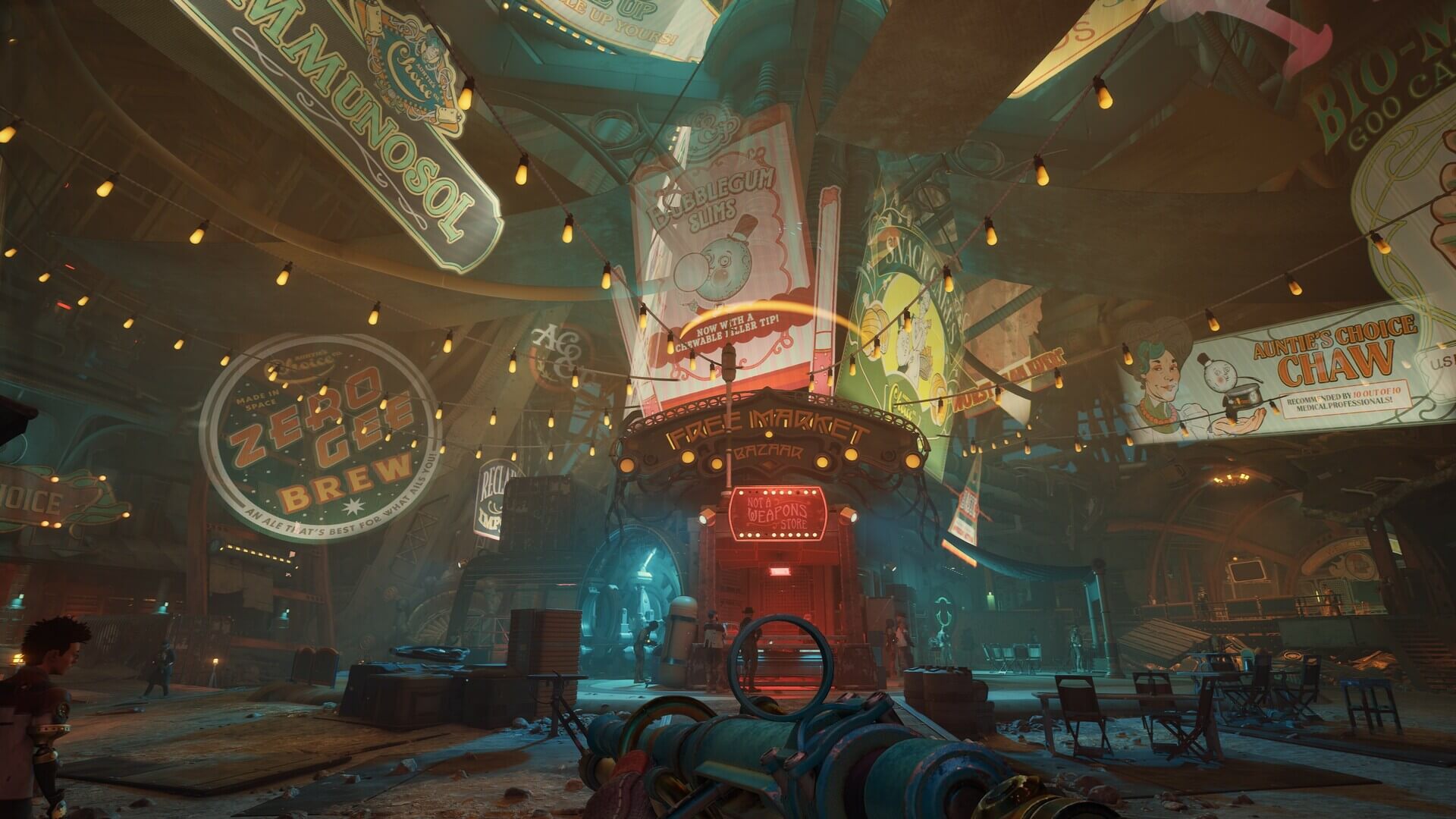
The Outer Worlds 2 thrives on player choice. You’ll quickly find yourself pulled between factions, corporate giants, rebels, cults, scientists, mercenaries, all with their own goals and ideologies. Aligning yourself with one often means alienating another, and the game doesn’t soften that blow. Picking sides matters.
There are times where you’re given multiple paths you can take to get to the next big plot beat. Often leading you to aligning with one character or faction over another. Hearing them out, weighing up their goals with yours and then making a choice. There isn’t a clear “right” answer, and whoever you don’t side with can close off opportunities. But while losing access to their quests stung, but it made my decision feel weighty and permanent. That’s something a lot of RPGs struggle to nail, Outer Worlds 2 gets it right. This also makes the game hugely replayable. On another run, I’ll make different alliances, chase the quests I missed, and maybe build a completely different character with a new skill set.
If you just sprint through the main story, you’ll miss half of what makes this game great. Every area hides something worth seeing, secret bunkers, optional side quests, lore entries that feed into later conversations, and rare weapons that completely change your combat rhythm.
Exploration here isn’t busywork, it’s meaningful discovery. I constantly stumbled upon small moments, a corporate memo that recontextualised a major plot thread, or a forgotten outpost housing a powerful weapon. Spending time soaking in each location always paid off, whether with story context, loot, or just great writing. So my advice, don’t rush. The Outer Worlds 2 is best enjoyed at your own pace. Wander, role-play, talk to everyone, and live in it. You’ll find the experience far richer that way.
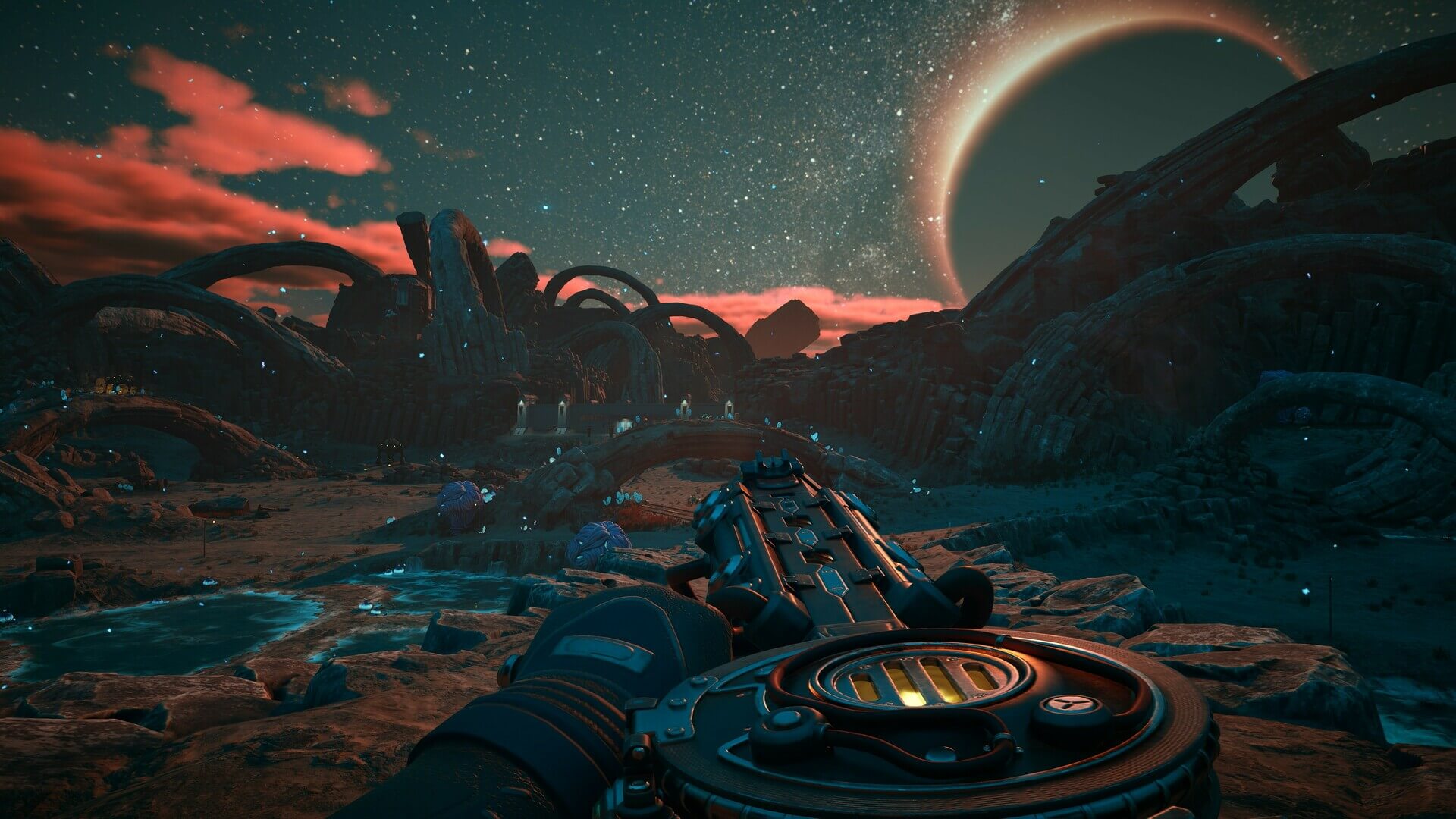
One of the most satisfying parts of the game is how many ways there are to fight. Whether you’re blasting away with energy rifles, sneaking through bases with pistols, or going full melee berserker, the weapon variety gives you plenty of room to find your groove. I personally found mid-range rifles and a few special weapons best suited to my playstyle, but there’s something for everyone. The shooting feels tighter and more responsive than the first game, too, still not pure FPS levels of precision, but a definite improvement.
The companions are easily one of the highlights. Each has a unique voice, combat ability, and worldview, and they all feel genuinely integral to the story rather than optional add-ons. Before major missions, you can choose which ones accompany you, and your picks really matter, some will chime in during key conversations, alter dialogue outcomes, or be acknowledged by NPCs. Sometimes they even speak up mid-conversation, adding colour or pushing a situation in a direction you didn’t expect.
Each companion also has a unique combat skill you can trigger on a cooldown, which can completely change a fight’s rhythm. Their small skill trees let you tweak how they support you, and those active abilities often saved me in tough battles. Beyond mechanics, though, their presence just makes the journey feel more human. They react to your choices, judge your morals, and sometimes even call you out. It’s fantastic storytelling design, your crew feels like your conscience and your company rolled into one.
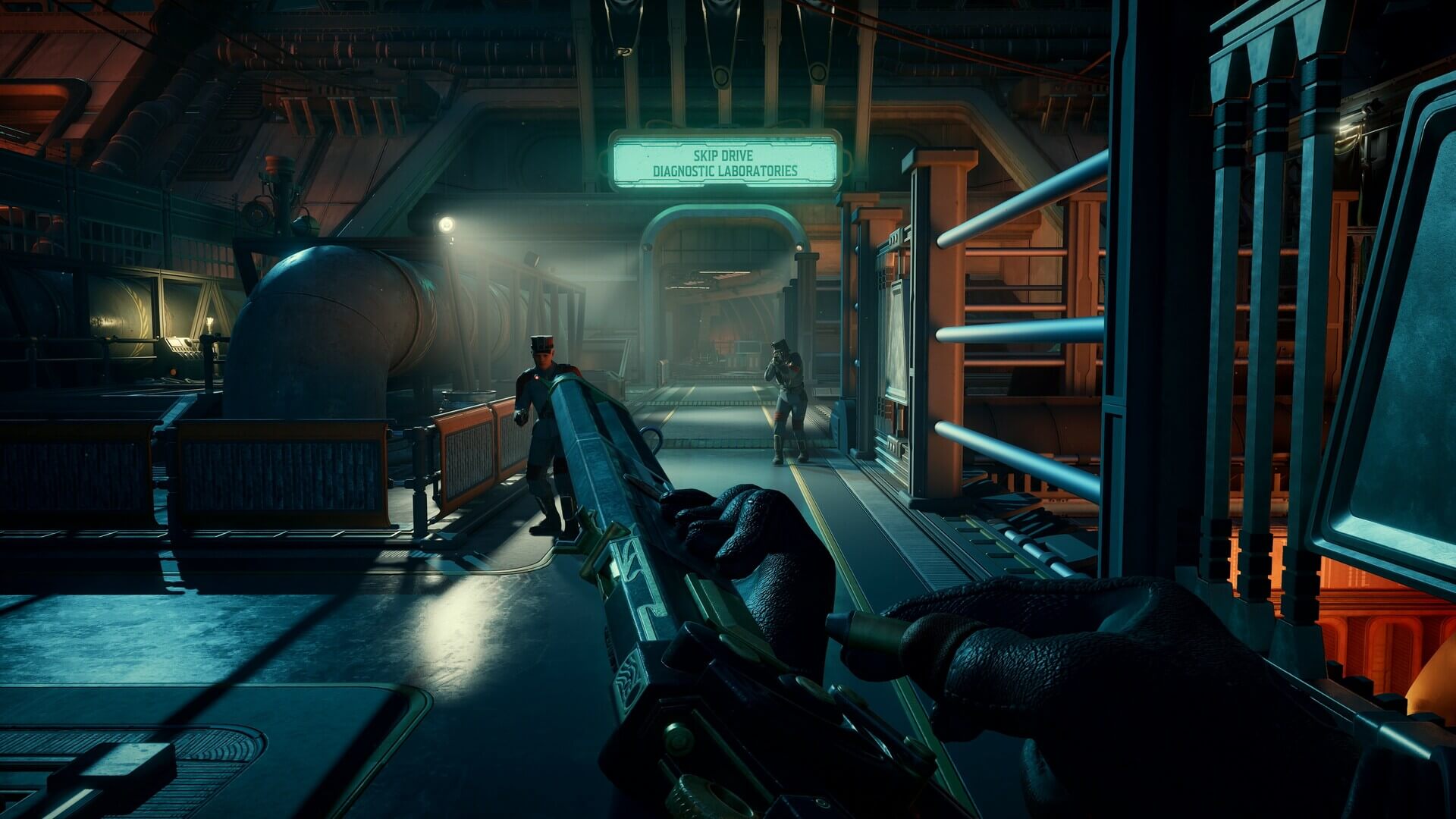
On the technical side, The Outer Worlds 2 runs well on PS5, though not perfectly. Most of the time it’s smooth and stable, but I did notice the occasional framerate dip, particularly during hectic fights or heavily populated city hubs. It’s not game-breaking, but it’s noticeable. I also ran into a few minor bugs, enemies occasionally failed to notice me, or spotted me through walls, sometimes my bullets just… didn’t register hits, which was frustrating when ammo was scarce. None of this derailed the experience, but it did remind me I was playing a game that could use a patch or two. Knowing Obsidian, those fixes are probably coming soon. Beyond that, load times were quick, the visuals looked crisp, and the DualSense feedback during combat was solid. Technically, it’s a strong showing, just not spotless.
If I had to single out the game’s defining strength, it’s the writing. Obsidian has always excelled at it, and this sequel is no exception. Whether it’s companion banter, corporate propaganda, or heartfelt personal stories, every line feels deliberate and authentic. I found myself exhausting dialogue options just to see what else characters might say. The vocal performances across the board are excellent, selling both the humour and the emotion the script demands.
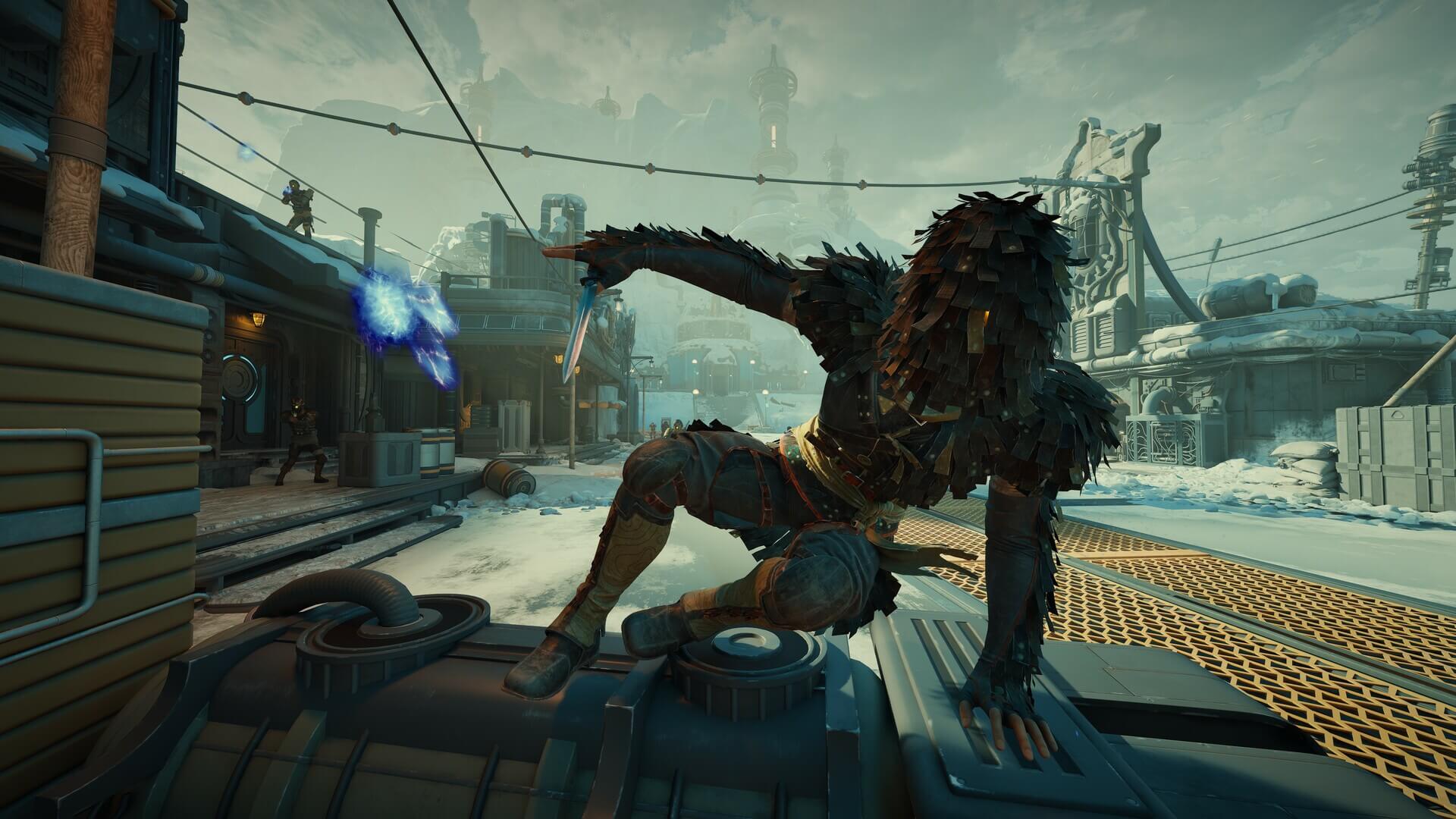
Final Thoughts
I came away very impressed with The Outer Worlds 2, not because it reinvents the formula, but because it refines it. It’s smarter, more confident, and far more flexible than its predecessor. The choices you make truly shape your journey, the factions and companions give you reasons to replay, and the world itself rewards curiosity at every turn.
Sure, deeper character customisation and fewer small bugs would have been nice, but those are easy trade-offs for how strong everything else is. What Obsidian has built here is a world that feels reactive, one where your background, skills, and decisions don’t just flavour the story, they define it.
In a time when too many RPGs promise freedom but funnel you down narrow paths, The Outer Worlds 2 actually delivers on choice and consequence. It’s everything I wanted from a sequel, familiar enough to feel like home, bold enough to feel new. So if you’re looking for a smart, funny, and deeply replayable space RPG that gives you true agency and a cast worth caring about, this is it. Settle in, explore every corner, and play it your way. Obsidian has done it again, and for me, The Outer Worlds 2 is one of the best RPG experiences on PS5 this year.
A PS5 review code was provided by the publisher for the purpose of this review.
If you want to see more content like this and never miss one of our frequent gaming and anime giveaways come and Follow Ani-Game on Twitter.
9
- + A great story full of choice and consequence
- + The companions change up how missions play out
- + Amazing character writing and worldbuilding
- + Diverse range of customisation options that encourage replayability
- - Minor frustrating technical bugs
